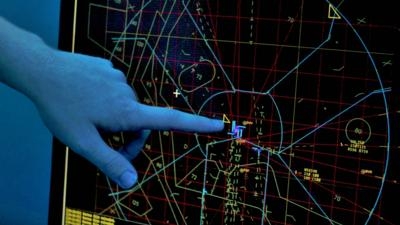Tue, Oct 31, 2017
Is Testing Air Traffic Control System At Prescott, AZ Campus
The Joint Unmanned Air Traffic Team (JUATT) at Embry-Riddle Aeronautical University's Prescott Campus is working to change the way commercial unmanned operators and participating hobbyists safely fly their aircraft. They have developed an unmanned air traffic control system based on the Military Grid Reference System (MGRS). The use of this grid system is common for current military operations and students at Embry-Riddle have been educated on how to use MGRS.

Seeing and avoiding are among the primary concerns surrounding unmanned aircraft systems (UAS), or drones. The JUATT system is similar to how air traffic control (ATC) currently service visual flight rules (VFR). Each UAS operator would file a proposed flight plan that requests permission to occupy an area of airspace up to 400 ft. above ground level using the grid system. This plan is reviewed by an unmanned controller who will either approve or deny the requested airspace. UAS operators then communicate with the unmanned controllers via text chat which helps reduce the cost of operations and allows ground based operators to communicate easily without radio interference.
According to the team, nothing like this currently exists. "Our system is different because it uses a grid reference system instead of fixes, waypoints, ground navigation aids, or latitude and longitude," said Jennah Perry, Professor of Air Traffic Management.
The JUATT system would allow for commercial UAS flights to be approved in a much more traditional manner by allowing UAS operators to contact the controlling agencies directly, while at the same time ensuring that manned aircraft are given the proper separation from UAS.
The team acknowledges that FAA ATC facilities are understaffed and overworked. JUATT proposes that with Flight Service Station hub facilities currently housing experienced air traffic control specialists already familiar with unmanned operations, a mere software upgrade to the FS21 system could allow commercial unmanned aircraft operations to be safely integrated and separated in the National Airspace System.
"The JUATT method combined with the Flight Service concept would essentially solve all problems the FAA faces with respect to integrating commercial unmanned aircraft into the National Airspace System," added Perry. "Instead of trying to 're-invent the wheel,' perhaps we should be looking at ways to economically and feasibly transform it into what the users need today."
The JUATT team will present their research on Nov. 7 at the Arizona UAS Summit & Expo in Mesa, AZ.
(Image provided with ERAU news release)
More News
Terminal Radar Service Area Airspace surrounding designated airports wherein ATC provides radar vectoring, sequencing, and separation on a full-time basis for all IFR and participa>[...]
Very High Frequency (VHF) The frequency band between 30 and 300 MHz. Portions of this band, 108 to 118 MHz, are used for certain NAVAIDs; 118 to 136 MHz are used for civil air/grou>[...]
“From approximately November 2021 through January 2022, Britton-Harr, acting on behalf of AeroVanti, entered into lease-purchase agreements for five Piaggio-manufactured airc>[...]
Also: Virtual FLRAA Prototype, IFR-Capable Autonomous A/C, NS-32 Crew, Golden Dome Missile Defense Bombardier announced that the first production Global 8000 successfully completed>[...]
Aero Linx: The 1-26 Association (Schweizer) The Association’s goal is to foster the helpfulness, the camaraderie, and the opportunity for head-to-head competition that is fou>[...]
 ANN's Daily Aero-Term (05.29.25): Terminal Radar Service Area
ANN's Daily Aero-Term (05.29.25): Terminal Radar Service Area ANN's Daily Aero-Term (05.30.25): Very High Frequency (VHF)
ANN's Daily Aero-Term (05.30.25): Very High Frequency (VHF) Aero-News: Quote of the Day (05.30.25)
Aero-News: Quote of the Day (05.30.25) Airborne 05.23.25: Global 8000, Qatar B747 Accepted, Aviation Merit Badge
Airborne 05.23.25: Global 8000, Qatar B747 Accepted, Aviation Merit Badge ANN's Daily Aero-Linx (05.30.25)
ANN's Daily Aero-Linx (05.30.25)



